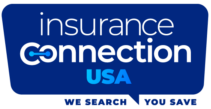
I get a lot of questions from clients about the Shingles Vaccine and will their Medicare plan cover the cost of the shot. The answer is yes, but it does depend on the Part D drug plan you have and the pharmacy you use.
Medicare Part A (Hospital Insurance) or Medicare Part B (Medical Insurance) doesn’t cover the shingles shot. Generally, Medicare prescription drug plans (Part D) cover all commercially available vaccines (like the shingles shot) needed to prevent illness. So Medicare part A and B do not cover the shots but your Medicare part D drug plan will cover it at a preferred pharmacy.
Medicare coverage for Shingrix and Zostavax, the two commercially available shingles vaccines, is provided only if you are enrolled in a stand-alone Part D drug plan or a Medicare Advantage plan that includes Part D drug coverage. There are many Medicare part D plans available so the plan you have will have a list of preferred pharmacies for you to choose, I would suggest doing a little research on which pharmacy provides and administers the shot and what co-pay tier level the vaccine is considered. If you would like us to assist you in that research please contact us, we are happy to assist.
For example: Silver Script a part D plan covers the Shingles shot and their preferred pharmacy is either CVS or Walmart. At CVS the first shingle shot co-pay is about $63.00 and the second shot would cost the same. The cost without insurance for the Shingrix vaccine is about $280. The following is a list of a few of the Part D drug plans and the average co-pay for the shot.
Medicare Part D Plan AVERAGE CO-PAY
AARP MedicareRx Preferred (PDP) $72
AARP MedicareRx Saver Plus (PDP) $51
AARP MedicareRx Walgreens (PDP) $49
Aetna Medicare Rx Saver (PDP) $30
Express Scripts Medicare – Value (PDP) $63
Humana Enhanced (PDP) $150
Humana Walmart Rx Plan (PDP) $53
SilverScript Plus (PDP) $63
Facts about the Shingles Vaccine
Shingles vaccination is the only way to protect against shingles , The CDC recommends that healthy adults 50 years and older get two doses of the shingles vaccine called Shingrix (recombinant zoster vaccine), separated by 2 to 6 months, to prevent shingles and the complications from the disease. Your pharmacist can give you Shingrix as a shot in your upper arm.
Shingrix provides strong protection against shingles and PHN. Two doses of Shingrix are more than 90% effective at preventing shingles and PHN. Protection stays above 85% for at least the first four years after you get vaccinated. Shingrix is the preferred vaccine, over Zostavax® (zoster vaccine live), a shingles vaccine in use since 2006. Zostavax may still be used to prevent shingles in healthy adults 60 years and older. For example, you could use Zostavax if a person is allergic to Shingrix, prefers Zostavax, or requests immediate vaccination and Shingrix is unav?ailable.
Who Should Get Shingrix
Healthy adults 50 years and older should get two doses of Shingrix, separated by 2 to 6 months. You should get Shingrix even if in the past you had shingles, are not sure if you had chickenpox and there is no maximum age for getting Shingrix. If you had shingles in the past, you can get Shingrix to help prevent future occurrences of the disease. There is no specific length of time that you need to wait after having shingles before you can receive Shingrix, but generally you should make sure the shingles rash has gone away before getting vaccinated.
You can get Shingrix whether or not you remember having had chickenpox in the past. Studies show that more than 99% of Americans 40 years and older have had chickenpox, even if they don’t remember having the disease. Chickenpox and shingles are related because they are caused by the same virus (varicella zoster virus). After a person recovers from chickenpox, the virus stays dormant (inactive) in the body. It can reactivate years later and cause shingles.
Please contact us with any questions you have about Medicare or Part D drug plans, you can reach us at 940-382-4700 or email bob@bgarrison.com
